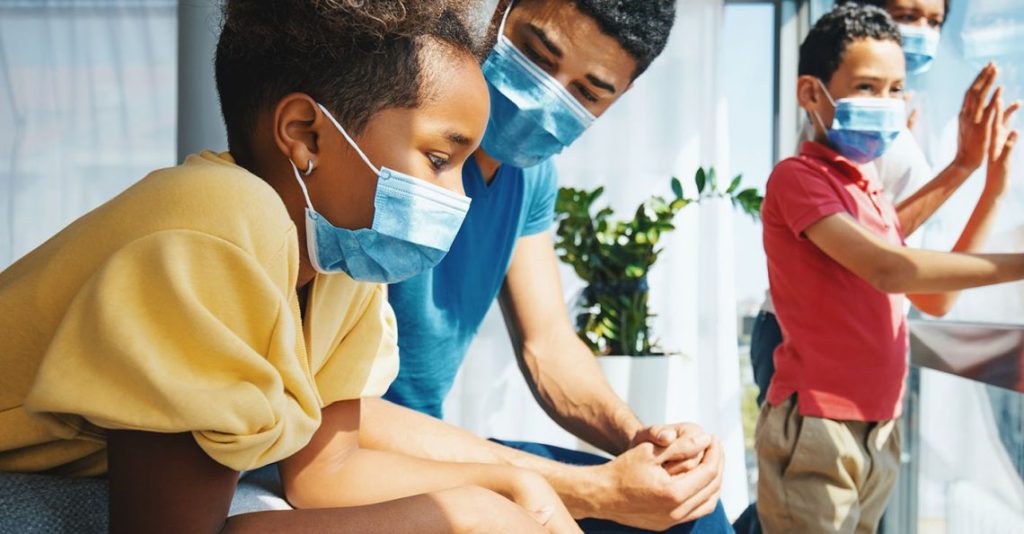By Stacy M. Brown
NNPA Senior National
Correspondent
The Centers for Disease Control and Prevention (CDC) reports a surge in Mycoplasma pneumoniae infections—commonly called “walking pneumonia”—across the United States. The illness, a milder form of pneumonia, is affecting children in unprecedented numbers, with cases rising since June, according to Nationwide Children’s Hospital.
Dr. Jason Newland, Chief of Infectious Diseases at Nationwide Children’s Hospital, said the increase is unusual, particularly in children as young as 2 years old. “We’ve not experienced this in a long time, this much mycoplasma or walking pneumonia,” Newland explained to WOSU radio station in Ohio. Although anyone can contract walking pneumonia, individuals over 5 typically experience it.
The bacteria Mycoplasma pneumoniae causes walking pneumonia, which infects the lungs. While some individuals recover without antibiotics, symptoms can range from mild to severe. “Thankfully, it’s termed walking pneumonia because most of the time, you know, people feel bad, but they can walk around and do okay. Now, for some, it can be really severe,” Newland said. “Some of our families would tell you, ‘man, it is not as mild as some would make you think.’”

A Nationwide Concern with Disproportionate Impact
Pneumonia disproportionately affects African Americans, with higher infection rates, more severe complications, and increased mortality compared to other racial groups, according to research. Socioeconomic factors, limited access to preventive care like vaccinations, and higher rates of underlying conditions such as asthma and diabetes contribute to these disparities.
“This is not a new bacteria. It’s a bacteria that commonly causes pneumonia, but we are seeing an increase in detection over the last few weeks. … This particular bacteria is what typically causes what we refer to as ‘walking pneumonia,’” said Dr. Craig Shapiro, an infectious diseases specialist, told reporters. Shapiro noted that the illness is generally mild in healthy children but can lead to severe complications in those with preexisting health conditions.
Recognizing Symptoms and Seeking Care
Symptoms of walking pneumonia include a lingering cough, fatigue, chills, and shortness of breath. Infected individuals may experience symptoms for weeks or months, with the infection often impairing the lungs’ ability to clear mucus and bacteria.
Parents should monitor for signs of labored breathing, persistent coughing, or difficulty with physical activities. Shapiro advised keeping symptomatic children home from school to limit the spread of infection. “It’s important to remember to wash your hands. That’s going to be the best way to prevent any infection,” Shapiro said. “Really, you should keep them home so that they’re not around other people.”
Dr. Michael Chang of UTHealth Houston emphasized the importance of timely treatment, particularly in children with weakened immune systems or underlying conditions. For suspected Mycoplasma infections, doctors often prescribe antibiotics like azithromycin or doxycycline, which are most effective when started within the first few days of symptoms.
A Post-Pandemic Shift in Patterns
Newland attributed part of the summer’s spike to increased social interactions as pandemic restrictions have eased. “As we’ve continued to do more and more and more stuff together over the last few years, we just found more susceptible groups,” he said. Although the number of walking pneumonia may be declining, respiratory viruses like RSV are rising as the cold and flu season approaches.
To reduce the spread of respiratory illnesses, Newland recommends a return to common-sense precautions learned during the pandemic, such as frequent hand washing, staying home when sick, and mask-wearing in crowded settings. “There are common-sense things that we have learned through our experiences in the last four years that have definitely worked in preventing us from getting sick with one of these respiratory viruses,” Newland said.
“Recognizing the symptoms early and ensuring equitable access to healthcare are key to improving outcomes for those most affected by this illness,” Shapiro added.




